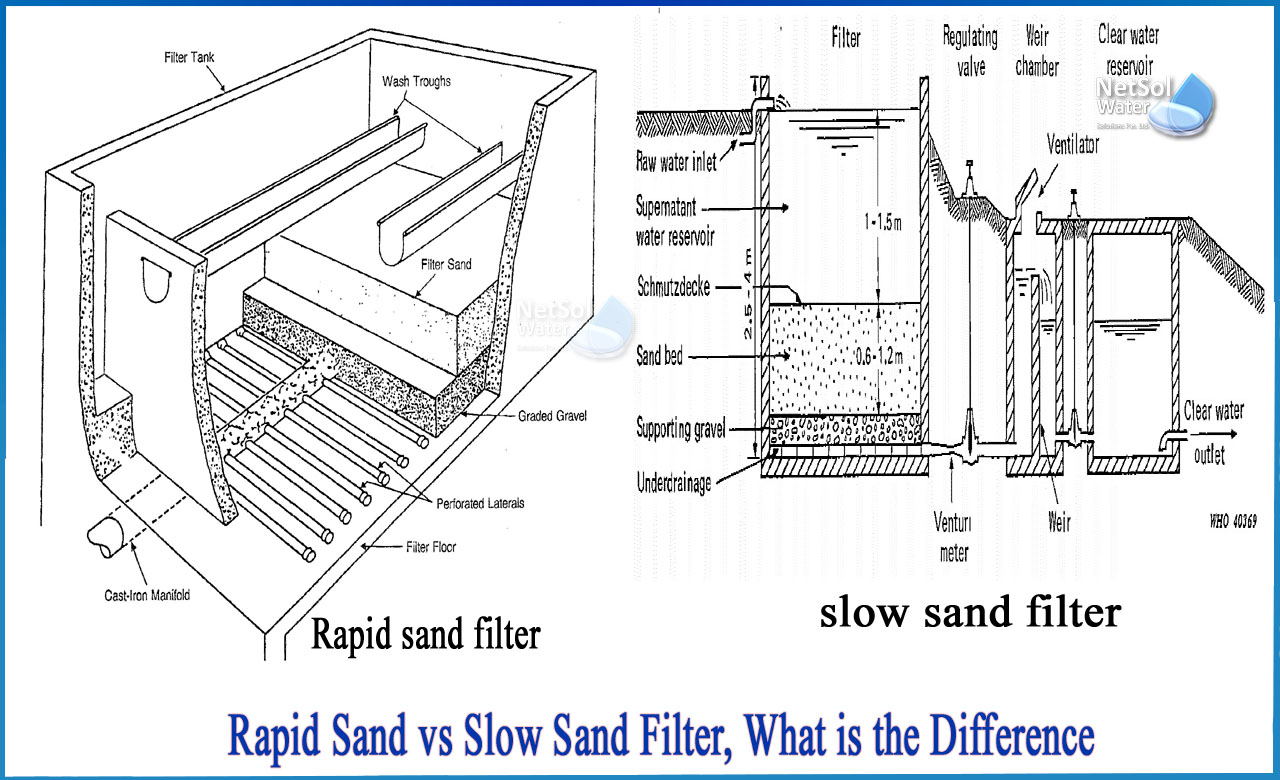What is the difference between rapid sand and slow sand filter?
Rapid sand filters (also known as Rapid Gravity Filters or RGFs) and slow sand filters are the two major types of sand filters used for water treatment. Roughing Filters, which are horizontal-flow gravel filters used as a roughing treatment for turbid raw waters prior to sand filtering, should not be mistaken with sand filters.
There are numerous differences between the two sand filtration procedures.
Rapid sand filters, on the other hand, are typically completely automated, sophisticated, and expensive, and are used as part of a larger treatment procedure in industrialised countries. They are not known to be suitable for use in households, as are versions of the slow sand filter, such as the intermittently run slow sand filter (or IOSFF).
However, for the interest of clarity, a brief comparison is provided below.
CRITERIA |
RAPID SAND FILTERS |
SLOW SAND FILTERS |
|---|---|---|
|
Improvement of water quality |
With pre-treated raw water, a filtrate quality of less than 1 NTU, 90 percent coliform removal, 50–90 percent Cryptosporidium and Giardia cyst removal, 10% colour removal, and 5% Total Organic Content reduction is attainable. Given a variety of pathogenic, chemical, and aesthetic criteria, quick sand filtering is judged third most effective of all treatment techniques as a single step. |
With raw water, a filtrate with less than 1 NTU, 95 percent coliform removal, 99 percent Cryptosporidium and Giardia cyst removal, 75 percent colour removal, and 10% Total Organic Content removal is possible.
Given a variety of pathogenic, chemical, and aesthetic criteria, slow sand filtration is judged second most effective of all treatment techniques as a single step. |
|
Rate of flow |
A rapid sand filter may produce a flow of between 4 and 21 m/h, which is 20 to 50 times faster than slow sand filtration. |
Flow rates are typically around 0.1 m/h, but they can reach 0.4 m/h. |
|
Filter media |
Rapid sand filters are manufactured with graded sand and, in some cases, a coarser layer of material on top of the sand to improve flow rate (for example, anthracite), in which case they are referred to as dual-media filters. Rapid filters typically have an effective size of greater than 0.55mm and a Uniformity Coefficient of less than 1.5. |
Slow sand filters, on the other hand, should have an effective size of 0.15–0.35mm and a Uniformity Coefficient of 1.5–3, with a preference for less than 2. |
|
Penetration of solid matter |
Rapid sand filters, which are usually cleaned by backwashing, have a deeper penetration of suspended particles into the sand bed. |
Solids only penetrate slow sand filter beds by 0.5 to 2 cm on average, allowing for more hand cleaning procedures. |
|
Pre-treatment |
For rapid sand filtration, pre-treatment is frequently required. Coagulation and flocculation, followed by sedimentation, could be used in this treatment. |
Raw waters with turbidity’s less than 50 NTU normally don't require any pre-treatment. Coagulation and flocculation are not recommended as pre-treatments for slow sand filters due to the risk of floc carryover. |
Netsol Water is Greater Noida-based leading water & wastewater treatment plant manufacturer. We are industry's most demanding company based on client review and work quality. We are known as best commercial RO plant manufacturers, industrial RO plant manufacturer, sewage treatment plant manufacturer, Water Softener Plant Manufacturers and effluent treatment plant manufacturers. Apart from this 24x7 customer support is our USP. Call on +91-9650608473, or write us at enquiry@netsolwater.com for any support, inquiry or product-purchase related query.



